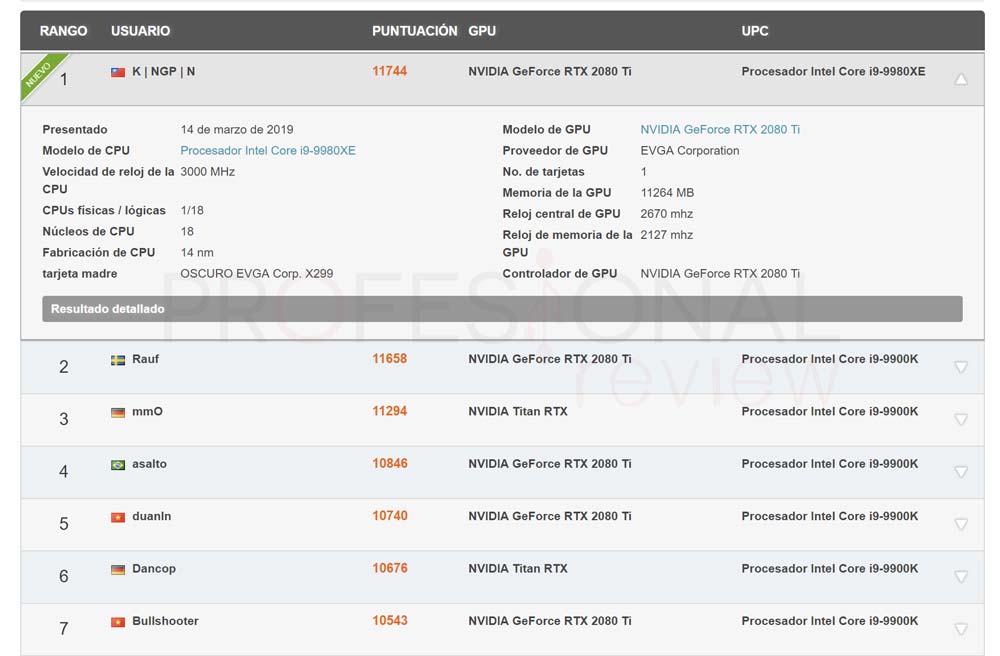In a show of creativity and power, overclockers took the new EVGA GeForce RTX 2080 Ti Kingpin Hybrid with them and accelerated it to a stratospheric number of no less than 2.7 GHz clock frequency and 17 Gbit/s speed from its GDDR6 memory, setting a new global record in the 3DMark Port Royal.
This extreme version of the Nvidia RTX 2080 Ti Kingpin Hybrid was first seen in the CES 2019, a colossal card itself that incorporates a hybrid air-liquid cooling system thanks to a 120mm exchanger. The update we will now comment on, the first version, has managed to be overclocked to a clock frequency of 2.7 GHz, compared to 2.4 GHz obtained in other experiments, and a memory frequency of 8509 MHz with 17018 MHz effectively, i.e. 17 Gbps. In this way, we have achieved bandwidth of 750 Gbps, which in itself is somewhat lower than that of other tests by the manufacturer, but is compensated by a higher clock frequency.
This card is of course aimed at enthusiasts and divers who enjoy taking everything they touch to the limit. This card will finally see the light of day with a new update that uses a 240 mm instead of 120 mm fluid exchanger and a cover similar to that of the GTX 1080 Ti Kingpin model. The system is supported by a 100mm fan at the end with mesh panels to cool the copper block that absorbs all the heat from the GPU and other electronic speakers.
The circuit board is equipped with a VRM of not less than 19 power phases, which are powered via a triple 8-pin connector with a TDP of 520W. In this way, the manufacturer ensures that the overclocking capacity of this GPU is impressive, eliminating the performance limitations of the Turing architecture.
It is not all, as the outer cover of the card, includes an LCD screen that monitors and displays the main statistics of the GPU, namely, voltage, clock frequency, temperatures, use of the GPU and the speed of the pump and fan. The monitoring is complemented by a series of LED displays and interaction buttons for the BIOS and headers for an Evbot module.
These are the characteristics of the model that will come on the market and that has demonstrated its capacity with the overclocking numbers described above. For this reason, in the well-known benchmark Port Royal of Ray Tracing and DLSS of 3DMark, a score of 11744 points was achieved, which was placed, as well as the most powerful individual graphics card of the desktop of all time in this benchmark.
If one considers the average values of other Nvidia RTX, one speaks of a difference of more than 1000 points, for example with a whole Titan RTX. The overclocking device used consists of an Intel Core i9-9980XE under LN2 with 5.6 GHz overclocking and an EVGA X299 DARK motherboard as well as 32 GB RAM G.Skill Trident Z at 4000 MHz. Who had them?
You can see that you can extract much more from custom GPU models. This graphics card doesn’t have a market price yet, but given the power and its closest “rivals”, it will be quietly above 1500 dollars.
